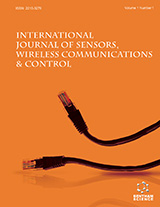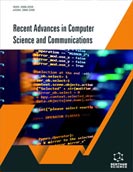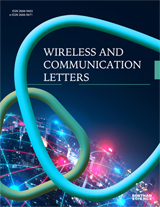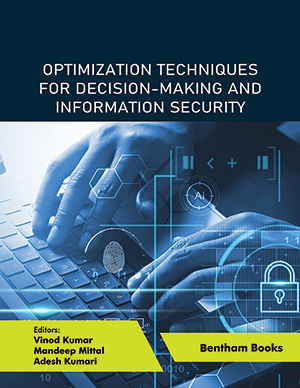
Abstract
Background: As the e-commerce product reviews and social media posts are increasing enormously, the size of the database for polarity/ sentiment detection is a challenging task, and again, predicting polarities associated with respect to aspect terms end to end in a sentence is a havoc in real-time applications. Human behavior is influenced by the various opinions generated in society. Public opinion influences our decisions most often. Businesses and establishments always need to collect the opinion of the society, which they try to obtain using customer feedback forms and questionnaires or surveys, which help them to be aware of the shortcomings if any, and to use suggestions to improve quality. It works in the same way for customers as well and the opinions of other customers about a particular product can come in handy when deciding to buy a product.
Objectives: In this work, an efficient Aspect-based Sentiment Classification technique has been introduced with a hybrid, multiple-word embedding methods and implemented using the CNN framework on large databases.
Methods: Most of the traditional models have a limitation on the dependency for one or more similar types of aspect words for sentiment classification problem. However, these conventional models such as TF-ID, Word 2Vec and Glove method consumes much more time for word embedding process and Aspect terms generation and further process of aspect level sentiment classification. Further, these models are facing problems of high true negative rate and misclassification rate on large aspect databases in sentiment classification. In this article, we have introduced an efficient Proposed ensemble word embedding model in the CNN network and defined Hybrid Word2 Vec method, Hybrid Glove word embedding method and Hybrid Random Forest model for sentiment classification.
Results: Experiments on a widely used benchmark prove that the proposed word embedding method- based classification technique results in to higher true positive rate with minimal misclassifications and also supports better runtime and accuracy than the traditional word embedding-based aspect level classification approaches.
Conclusion: In this article, a hybrid ensemble feature ranking-based classification model is proposed on the large aspect databases. In this work, advanced multiple-word embedding methods are implemented to improve the essential feature extraction problem in the aspect level sentiment process. These multiple-word embedding methods are applied to the sentiment databases in the CNN framework.
Keywords: Sentiment classification, opinion, WordNet, machine learning, word embedding, CNN.
[http://dx.doi.org/10.1016/j.neucom.2020.02.093]
[http://dx.doi.org/10.1016/j.knosys.2019.07.002]
[http://dx.doi.org/10.1016/j.knosys.2020.106162]
[http://dx.doi.org/10.1016/j.eswa.2020.113540]
[http://dx.doi.org/10.1016/j.knosys.2019.02.008]
[http://dx.doi.org/10.1016/j.future.2020.06.019] [PMID: 32572291]
[http://dx.doi.org/10.1016/j.neucom.2020.04.084]
[http://dx.doi.org/10.1016/j.knosys.2020.105918]
[http://dx.doi.org/10.1016/j.future.2017.11.036]
[http://dx.doi.org/10.1016/j.ipm.2020.102211]
[http://dx.doi.org/10.1016/j.eswa.2020.113234]
[http://dx.doi.org/10.1016/j.eswa.2019.113065]
[http://dx.doi.org/10.1016/j.knosys.2019.06.033]
[http://dx.doi.org/10.1016/j.ijar.2018.08.003]
[http://dx.doi.org/10.1016/j.neucom.2020.08.013]
[http://dx.doi.org/10.1016/j.neucom.2018.11.084]
[http://dx.doi.org/10.1016/j.neucom.2020.06.024]
[http://dx.doi.org/10.1016/j.neucom.2020.01.024]
[http://dx.doi.org/10.1016/j.neunet.2019.05.021] [PMID: 31195206]
[http://dx.doi.org/10.1016/j.eswa.2020.113987]
[http://dx.doi.org/10.1016/j.knosys.2019.105245]
[http://dx.doi.org/10.1016/j.ins.2020.09.038]
[http://dx.doi.org/10.1016/j.knosys.2019.105443]
[http://dx.doi.org/10.1016/j.ins.2019.11.048]
[http://dx.doi.org/10.1016/j.knosys.2020.106292]
[http://dx.doi.org/10.1016/j.measen.2023.100851]
[http://dx.doi.org/10.1016/j.knosys.2021.107196]
[http://dx.doi.org/10.1016/j.neucom.2021.03.092]
[http://dx.doi.org/10.1007/978-3-030-67664-3_38]
[http://dx.doi.org/10.3233/APC210175]
[http://dx.doi.org/10.22266/ijies2021.1031.47]
[http://dx.doi.org/10.1609/aaai.v33i01.33014253]
[http://dx.doi.org/10.1016/j.inffus.2020.11.006]
[http://dx.doi.org/10.1145/3583076]
[http://dx.doi.org/10.1016/j.knosys.2021.106755]
[http://dx.doi.org/10.1016/j.knosys.2021.106810]
[http://dx.doi.org/10.1109/SMART52563.2021.9676201]
[http://dx.doi.org/10.1016/j.inffus.2021.10.013]
[http://dx.doi.org/10.1016/j.inffus.2023.02.028]
[http://dx.doi.org/10.1109/TCAD.2022.3218614]
[http://dx.doi.org/10.1109/TVLSI.2022.3156479]
[http://dx.doi.org/10.1109/ARITH51176.2021.00035]
[http://dx.doi.org/10.1109/ICETCE48199.2020.9091738]
[http://dx.doi.org/10.1016/j.asej.2014.04.011]
[http://dx.doi.org/10.1007/s10462-016-9472-z]
[http://dx.doi.org/10.1109/ICDMW.2016.0132]
[http://dx.doi.org/10.1109/ACCESS.2019.2925059]
[http://dx.doi.org/10.1016/j.knosys.2016.06.009]
[http://dx.doi.org/10.1016/j.neucom.2021.02.041]
[http://dx.doi.org/10.1016/j.ins.2022.07.126]
[http://dx.doi.org/10.1016/j.neucom.2022.05.045]
[http://dx.doi.org/10.1016/j.knosys.2022.109942]
[http://dx.doi.org/10.1016/j.neucom.2022.04.027]
[http://dx.doi.org/10.1016/j.ipm.2022.103038]
[http://dx.doi.org/10.1016/j.neucom.2022.10.071]
[http://dx.doi.org/10.1016/j.knosys.2012.08.003]
[http://dx.doi.org/10.1016/j.inffus.2022.12.004]
[http://dx.doi.org/10.1016/j.neucom.2021.03.100]
[http://dx.doi.org/10.1016/j.nlp.2022.100003]
[http://dx.doi.org/10.1016/j.knosys.2022.110219]
[http://dx.doi.org/10.1016/j.inffus.2022.10.004]
[http://dx.doi.org/10.1016/j.knosys.2018.02.034]
[http://dx.doi.org/10.1016/j.future.2018.10.041]
 10
10 1
1

























